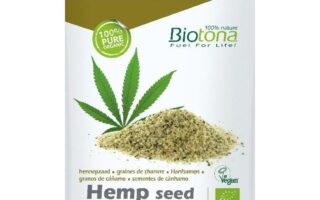In recent years, the world of cannabis has undergone a remarkable transformation, evolving from a stigmatized plant to a sought-after wellness product embraced by diverse communities. As the doors of legalization swing open across various regions, an array of marijuana products has emerged, each offering unique benefits and experiences that cater to both medicinal and recreational users. From aromatic oils and flavorful edibles to sleek vaporizers and vibrant CBD-infused beverages, the offerings are as diverse as the individuals who seek them. This article delves into the fascinating landscape of marijuana products, exploring their origins, applications, and the science behind their effects, inviting both aficionados and newcomers alike to discover the possibilities wrapped within this multifaceted plant.
Table of Contents
- Exploring the Spectrum of Marijuana Products for Every Need
- Understanding the Benefits and Risks of Different Cannabis Strains
- Navigating the World of Edibles: Dosage, Effects, and Selection Tips
- Choosing Quality: Key Factors in Evaluating Marijuana Product Brands
- Q&A
- Insights and Conclusions
Exploring the Spectrum of Marijuana Products for Every Need
As the cannabis industry continues to evolve, so does the variety of marijuana products catering to diverse preferences and needs. Consumers can choose from an array of offerings ranging from traditional options to innovative solutions. These include:
- Flower/Buds: The classic choice for many, available in numerous strains for different experiences.
- Edibles: Tasty treats infused with cannabis, ranging from gummies and chocolates to drinks, providing discretion and long-lasting effects.
- Concentrates: Highly potent forms such as oils, waxes, and shatter, ideal for experienced users seeking intense experiences.
- Tinctures: Liquid extracts taken sublingually, offering fast-acting benefits and precise dosing.
- Topicals: Creams and balms infused with cannabinoids for localized relief without the psychoactive effects.
To help consumers navigate this diverse landscape, it is essential to understand the distinct properties and benefits of each product category. Below is a brief comparison of common types:
| Product Type | Onset Time | Duration | Ideal For |
|---|---|---|---|
| Flower/Buds | Immediate | 1-3 hours | Casual use, social settings |
| Edibles | 30 mins - 2 hours | 4-8 hours | Long-lasting effects |
| Concentrates | Immediate | 1-3 hours | Experienced users |
| Tinctures | 15-45 minutes | 4-6 hours | Precise dosage control |
| Topicals | Immediate | 1-3 hours | Localized relief |
Understanding the Benefits and Risks of Different Cannabis Strains
Exploring cannabis strains reveals a diverse world where each variety offers unique effects and benefits. Generally, strains are categorized into three main types: Indica, Sativa, and Hybrid. Indica strains are known for their calming effects, often leading to relaxation and stress relief, making them an ideal choice for evening use. On the other hand, Sativa strains are associated with uplifting and energetic outcomes, suitable for daytime and social activities. Hybrids, a blend of both Indica and Sativa, can provide a balanced experience tailored to individual preferences. Here are a few benefits associated with cannabis use:
- Pain Relief: Many strains help alleviate chronic pain symptoms.
- Anxiety Reduction: Certain strains can significantly lower anxiety levels.
- Appetite Stimulation: Some varieties enhance appetite, beneficial for those undergoing treatments that suppress hunger.
However, it’s essential to acknowledge that not all experiences with cannabis are positive, and risks vary with different strains as well. For instance, high-THC strains may lead to increased anxiety or paranoia in some users, especially those predisposed to these feelings. Additionally, overconsumption of cannabis can lead to unpleasant side effects such as dizziness or nausea. Understanding the variety of cannabinoids and terpenes found in each strain can help users make informed decisions about their cannabis use. A simple comparison can illuminate these aspects:
| Strain Type | Main Effects | Potential Risks |
|---|---|---|
| Indica | Relaxation, Sleepiness | Over-sedation |
| Sativa | Euphoria, Energy | Heightened Anxiety |
| Hybrid | Balanced Effects | Variable, Depends on Ratio |
Navigating the World of Edibles: Dosage, Effects, and Selection Tips
Exploring edibles can be an exciting yet daunting experience, especially for newcomers. The dosage is vital; start low and go slow is the mantra to live by. Most edibles contain THC, the psychoactive compound in cannabis, and can be significantly more potent than smoking. It’s essential to carefully read labels, as products can vary widely in strength. For a beginner, a dose of 5-10 mg of THC is typically recommended. Don’t forget to consider the onset time, as edibles often take 30 minutes to 2 hours to kick in, leading many to mistakenly believe they need more when in reality they just haven’t felt the effects yet.
When it comes to selecting edibles, keep in mind your desired experience and personal preferences. There are numerous options available, from gummies and chocolates to savory snacks and infused beverages. Here are a few tips for making the best choice:
- Read Reviews: Customer feedback can guide you to reputable products.
- Check Ingredients: Look for quality ingredients, especially if you have dietary restrictions.
- Brand Reputation: Opt for trusted brands with transparency in their sourcing and testing practices.
| Type of Edible | Typical THC Content (mg) | Onset Time |
|---|---|---|
| Gummies | 5-10 | 30 mins – 1 hr |
| Chocolates | 10-20 | 1-2 hrs |
| Beverages | 2.5-10 | 30 mins – 1.5 hrs |
Choosing Quality: Key Factors in Evaluating Marijuana Product Brands
When evaluating marijuana brands, it’s essential to look beyond flashy packaging and flashy marketing strategies. A brand’s commitment to quality can often be judged by several crucial factors. First and foremost, consider the source of the cannabis. Responsible brands often provide transparent information about their cultivation practices, emphasizing organic or sustainable farming methods. Be wary of brands that offer little to no information about where their products come from; transparency is a hallmark of quality. Other important elements to assess include the strain variety offered and whether they provide lab testing results that confirm the potency and purity of their products.
Additionally, it’s beneficial to explore the brand reputation within the community. This can be gauged through customer reviews and testimonials, which often highlight the consistency and effectiveness of the products. Look for brands that prioritize customer education regarding their offerings, such as understanding terpenes and their impact on the experience. Furthermore, comparing pricing structures can give insights into a brand’s stance on affordability versus premium offerings. Brands that provide a balanced approach with quality ingredients while maintaining reasonable prices often prove to be more trustworthy in the long run.
| Factor | Why It Matters |
|---|---|
| Source | Influences product quality and safety. |
| Lab Testing | Confirms product potency and purity. |
| Brand Reputation | Reflects overall customer trust and satisfaction. |
| Pricing | Indicates brand quality and affordability balance. |
Q&A
Q&A: Exploring the World of Marijuana Products
Q1: What are marijuana products and what forms do they come in?
A1: Marijuana products encompass a wide array of items derived from the cannabis plant. The most common forms include dried flower (the traditional buds), oils, edibles (like gummies and chocolates), tinctures, topicals (creams and balms), and concentrates (such as wax or shatter). Each form offers unique methods of consumption, catering to varying preferences and needs.
Q2: How do marijuana products affect the body?
A2: The effects of marijuana products depend on the specific cannabinoids and terpenes they contain. Tetrahydrocannabinol (THC) is primarily responsible for the psychoactive effects, typically causing euphoria or a “high.” In contrast, cannabidiol (CBD) is non-psychoactive and often used for its potential therapeutic benefits, such as pain relief or anxiety reduction. The method of consumption also plays a role in the onset and duration of effects.
Q3: Are all marijuana products the same?
A3: No, not all marijuana products are created equal. They vary widely in potency, strain type, and intended effects. Products can be categorized as indica, sativa, or hybrid strains, each associated with different effects – from relaxation to increased energy. Additionally, lab testing can influence quality and safety, ensuring that consumers receive a product free from harmful contaminants.
Q4: Can anyone use marijuana products?
A4: The legality and appropriate use of marijuana products vary significantly by location. In regions where cannabis is legalized, adults typically must meet specific age restrictions. Additionally, individuals with certain medical conditions may seek out marijuana for its therapeutic effects, often requiring a prescription or recommendation from a healthcare professional. It’s essential to research local laws and consult a knowledgeable source before using any marijuana product.
Q5: What should first-time users know before trying marijuana products?
A5: First-time users should approach marijuana products with caution and start with small doses to gauge their body’s reaction. Understanding the difference between THC and CBD, as well as being aware of the method of consumption (edibles can take longer to affect you than smoking), is vital. Additionally, having a safe environment and companions present can enhance the experience and help manage any unexpected feelings or sensations.
Q6: How can someone choose the right marijuana product for their needs?
A6: Choosing the right marijuana product involves considering individual needs, preferences, and goals. Are you seeking relaxation, pain relief, or enhanced creativity? Research various strains and product types aligned with those goals. Consulting with knowledgeable staff at dispensaries or healthcare providers can provide personalized recommendations and help navigate the vast landscape of marijuana products.
Q7: Are there potential side effects associated with marijuana products?
A7: Yes, marijuana products can cause side effects, some of which may include dry mouth, increased heart rate, dizziness, paranoia, or impaired motor skills. The severity and likelihood of these effects often depend on dosage, individual tolerance, and the specific product used. Always be mindful of personal limits and consider starting with low-THC products if concerned about side effects.
Q8: What is the future of marijuana products?
A8: The future of marijuana products looks promising as research advances and normalization continues. Innovations in cultivation, extraction techniques, and product formulations suggest an expanding market with more diverse offerings. As regulations evolve and societal perceptions shift, consumers can expect to see an increase in product availability, quality, and variety tailored to meet a wide range of needs and preferences.
Insights and Conclusions
As we draw the curtain on our exploration of marijuana products, it’s clear that this multifaceted plant continues to evolve in both usage and perception. From innovative edibles to therapeutic oils, the spectrum of options caters to a diverse range of preferences and needs. Whether you’re a curious newcomer or a seasoned connoisseur, there’s always more to discover in this ever-expanding world. As regulations shift and research uncovers new benefits and applications, one thing is certain: the conversation around marijuana products will continue to grow. We invite you to stay informed, explore responsibly, and participate in the ongoing dialogue about this remarkable plant and its role in modern society.



